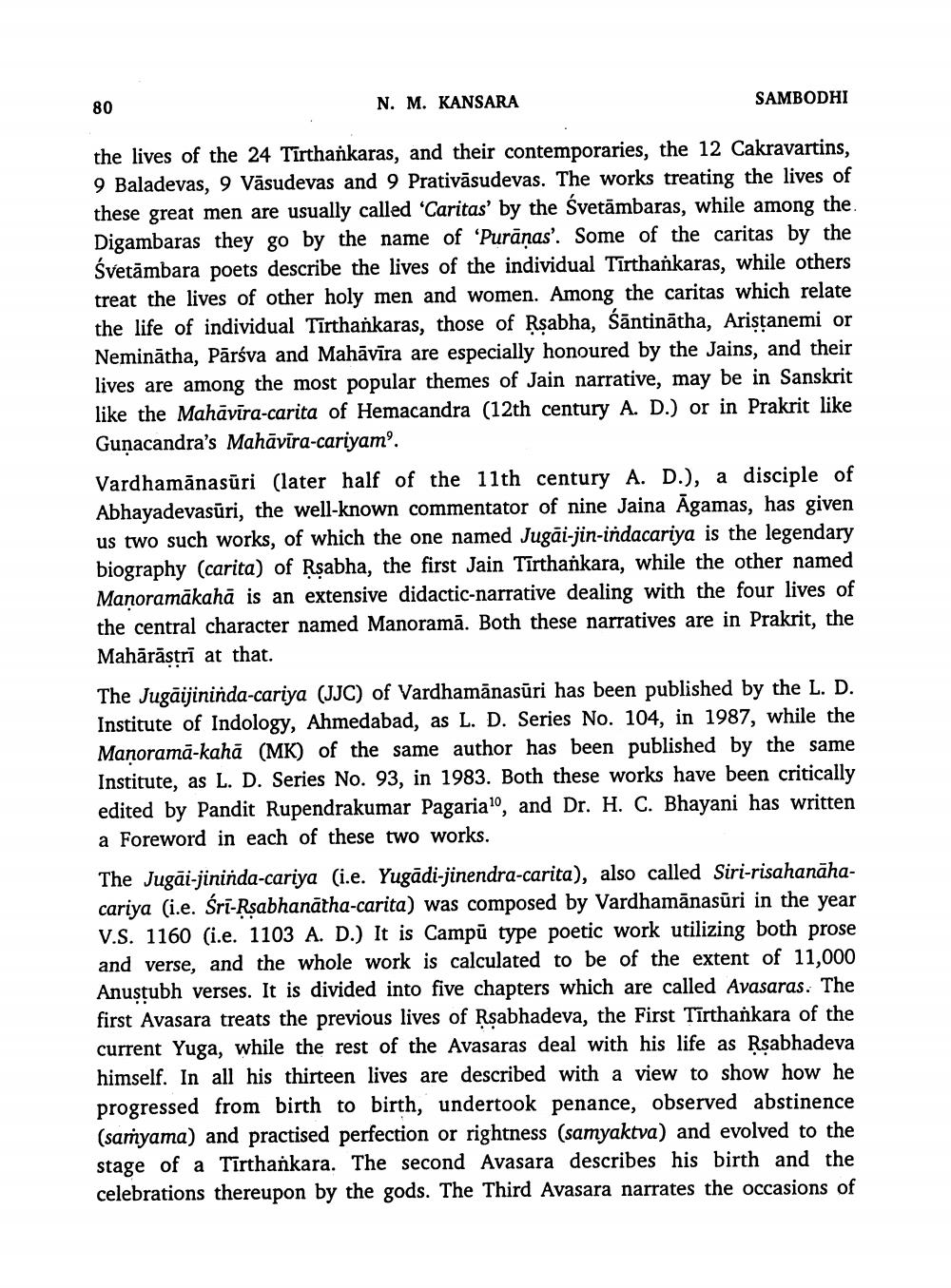________________
80
N. M. KANSARA
SAMBODHI
the lives of the 24 Tirthankaras, and their contemporaries, the 12 Cakravartins, 9 Baladevas, 9 Vāsudevas and 9 Prativāsudevas. The works treating the lives of these great men are usually called 'Caritas' by the Svetāmbaras, while among the. Digambaras they go by the name of 'Purāņas'. Some of the caritas by the Śvetāmbara poets describe the lives of the individual Tirthańkaras, while others treat the lives of other holy men and women. Among the caritas which relate the life of individual Tirthankaras, those of Rsabha, śāntinātha, Aristanemi or Neminātha, Pārsva and Mahāvīra are especially honoured by the Jains, and their lives are among the most popular themes of Jain narrative, may be in Sanskrit like the Mahāvīra-carita of Hemacandra (12th century A. D.) or in Prakrit like Gunacandra's Mahāvīra-cariyam'.
Vardhamānasūri (later half of the 11th century A. D.), a disciple of Abhayadevasūri, the well-known commentator of nine Jaina Āgamas, has given us two such works, of which the one named Jugāi-jin-indacariya is the legendary biography (carita) of Rsabha, the first Jain Tirthankara, while the other named Manoramākahā is an extensive didactic-narrative dealing with the four lives of the central character named Manoramā. Both these narratives are in Prakrit, the Mahārāstri at that.
The Jugāijininda-cariya (JJC) of Vardhamānasūri has been published by the L. D. Institute of Indology, Ahmedabad, as L. D. Series No. 104, in 1987, while the Manoramā-kahá (MK) of the same author has been published by the same Institute, as L. D. Series No. 93, in 1983. Both these works have been critically edited by Pandit Rupendrakumar Pagaria", and Dr. H. C. Bhayani has written a Foreword in each of these two works. The Jugāi-jininda-cariya (i.e. Yugādi-jinendra-carita), also called Siri-risahanāhacariya (i.e. Sri-Rsabhanātha-carita) was composed by Vardhamānasūri in the year V.S. 1160 (i.e. 1103 A. D.) It is Campū type poetic work utilizing both prose and verse, and the whole work is calculated to be of the extent of 11,000 Anustubh verses. It is divided into five chapters which are called Avasaras. The first Avasara treats the previous lives of Rşabhadeva, the First Tīrthankara of the current Yuga, while the rest of the Avasaras deal with his life as Rsabhadeva himself. In all his thirteen lives are described with a view to show how he progressed from birth to birth, undertook penance, observed abstinence (samyama) and practised perfection or rightness (samyaktva) and evolved to the stage of a Tīrthankara. The second Avasara describes his birth and the celebrations thereupon by the gods. The Third Avasara narrates the occasions of




